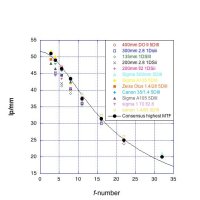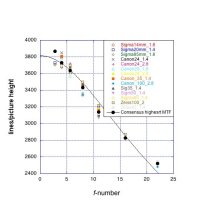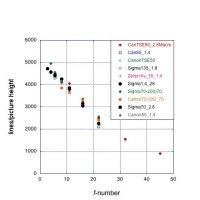For the Matrix Tests (ie the sensor) quote:He had images to back up his claim.
They are not 'the people' who test anything. They're just another site on the web. Their data must stand or fall on its own, and not on any claim to authority made by them, or by you on their behalf.
And it falls. They say they tested three lenses multiple times and chose 'the highest results' but they do not state which lens produced the highest results. I don't know what lens those data points are from, or if they're even all from one lens!
More importantly, they don't tell you want lenses were used on the other cameras. We know they're not adapting the two Canon lenses to the K-1, nor the RF lens to anything. So they weren't using the same lens on each body. How were the other cameras tested? What lenses used, and which ones produced 'the highest results'? Where does each square on the graph come from? I don't know and neither do you. Which means the graph is useless.
I can post sample images that agree with Tony's claim, but you'll hand wave them as "eyeballing." Problem is you can shop the web for a graph proving anything you want, including that men never landed on the moon and that the Earth is flat. Between a 'guess which lens produced this data point' graph and my lying eyes, I'll trust my lying eyes. Heck, I'll trust Tony's lying eyes over sharpness graph bingo.
The resolution of the matrix is based on the MTF50 function, and the measurements are standard on non-focused RAW files, which we have previously converted to TIFF format using the dcraw program. To escape from optical aberrations, we measure MTF50 values only for the f / 4.0-f / 16 aperture range, in which the main factor limiting the lens's performance is diffraction. It is also worth reminding that on each aperture we make from a dozen to several dozen pictures (both with autofocus and with manual focus), then we choose the best ones. In this part of the test we used three lenses: Canon EF 100 mm f / 2.8 L Macro IS USM, Sigma A 35 mm f / 1.4 DG HSM (attached by the adapter) and RF 24-105 f / 4.0. The highest results obtained with the use of these lenses are presented in the graph below.
In other words, they are minimising the effect of optical aberrations by using small apertures where diffraction is limiting the lens resolution and even then checking further by using different lenses to make sure that there are not residual aberrations. This is far more rigorous than using the images produced by people where the lens itself is contributing to the overall resolution.
Upvote
0



